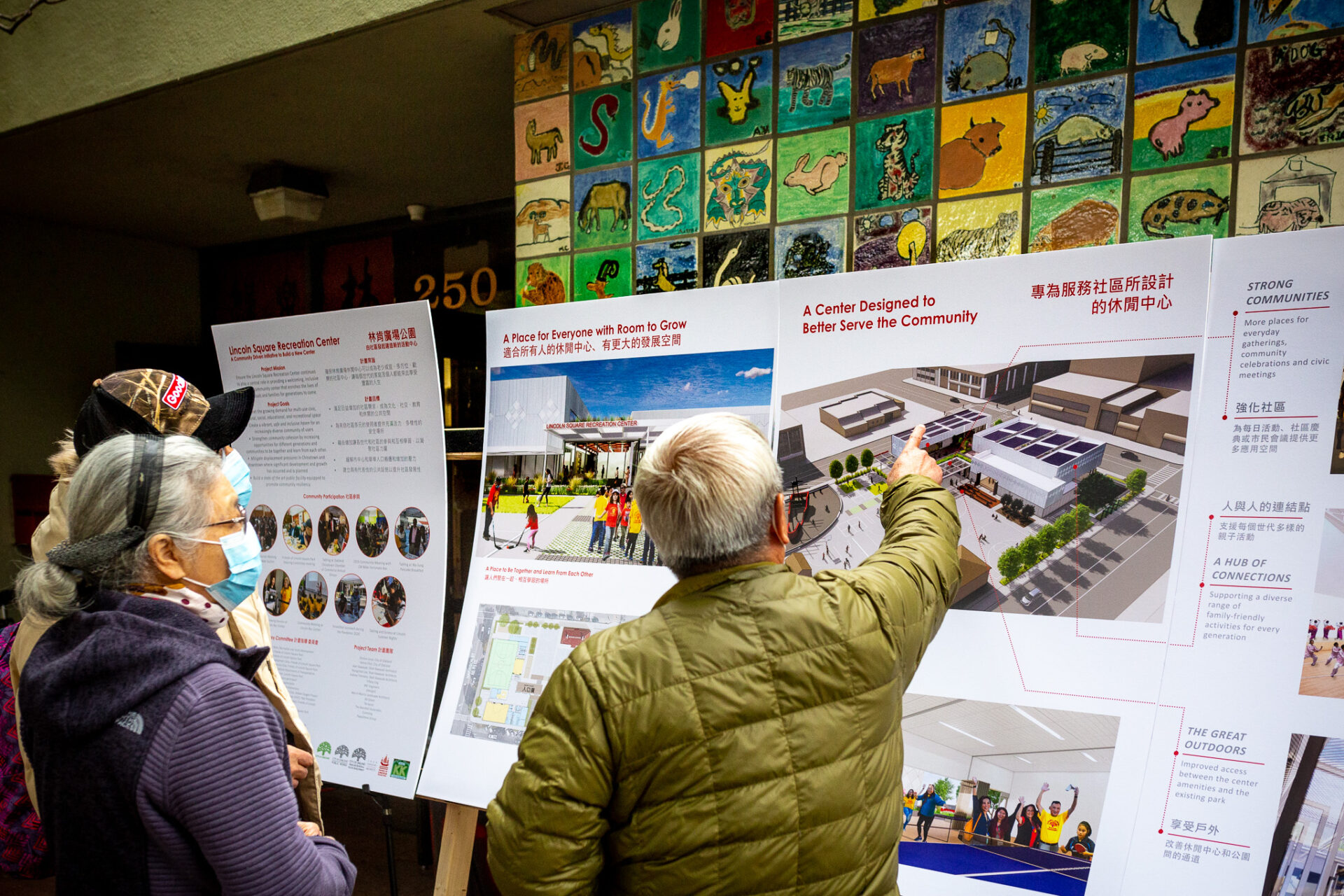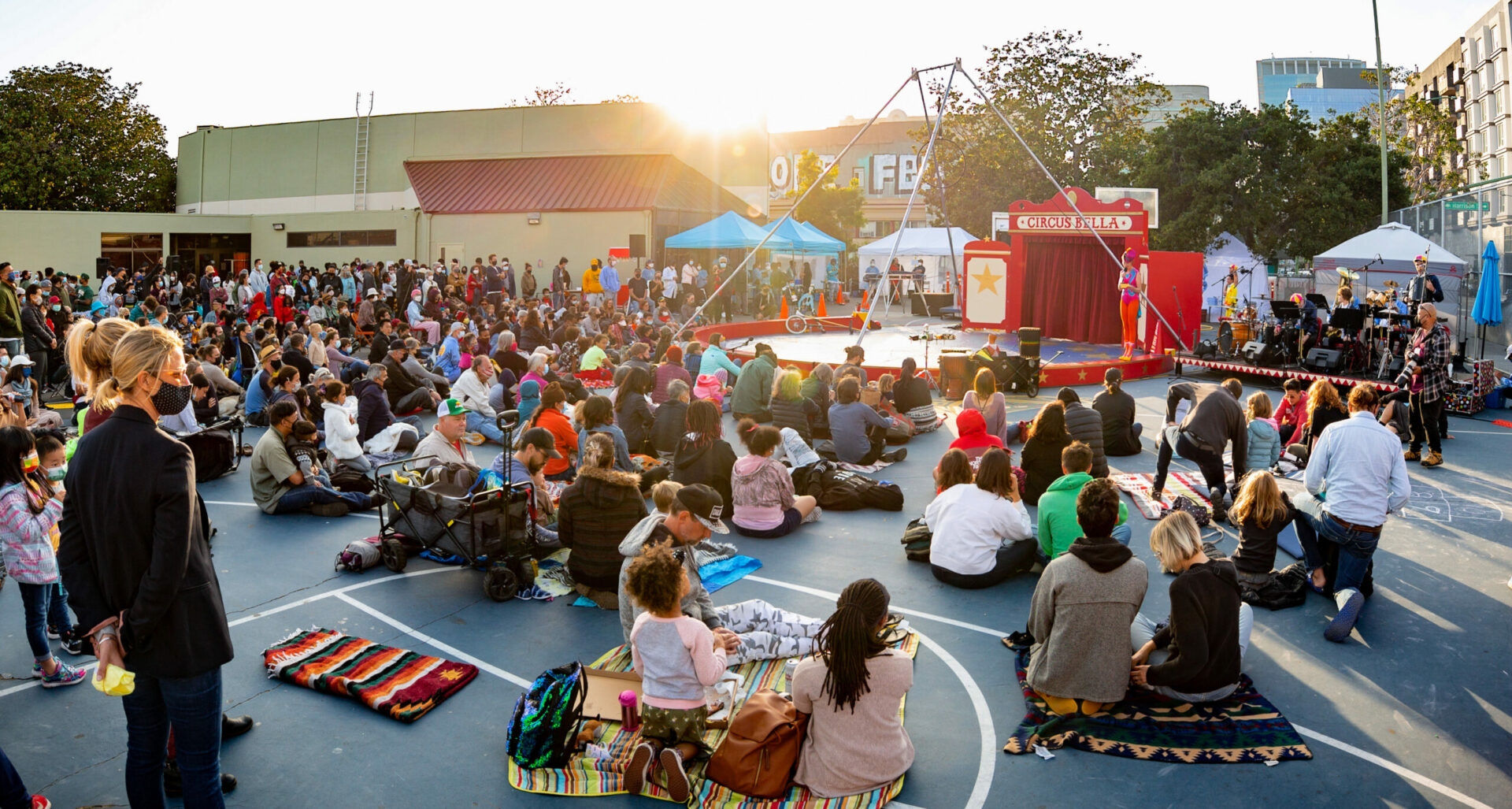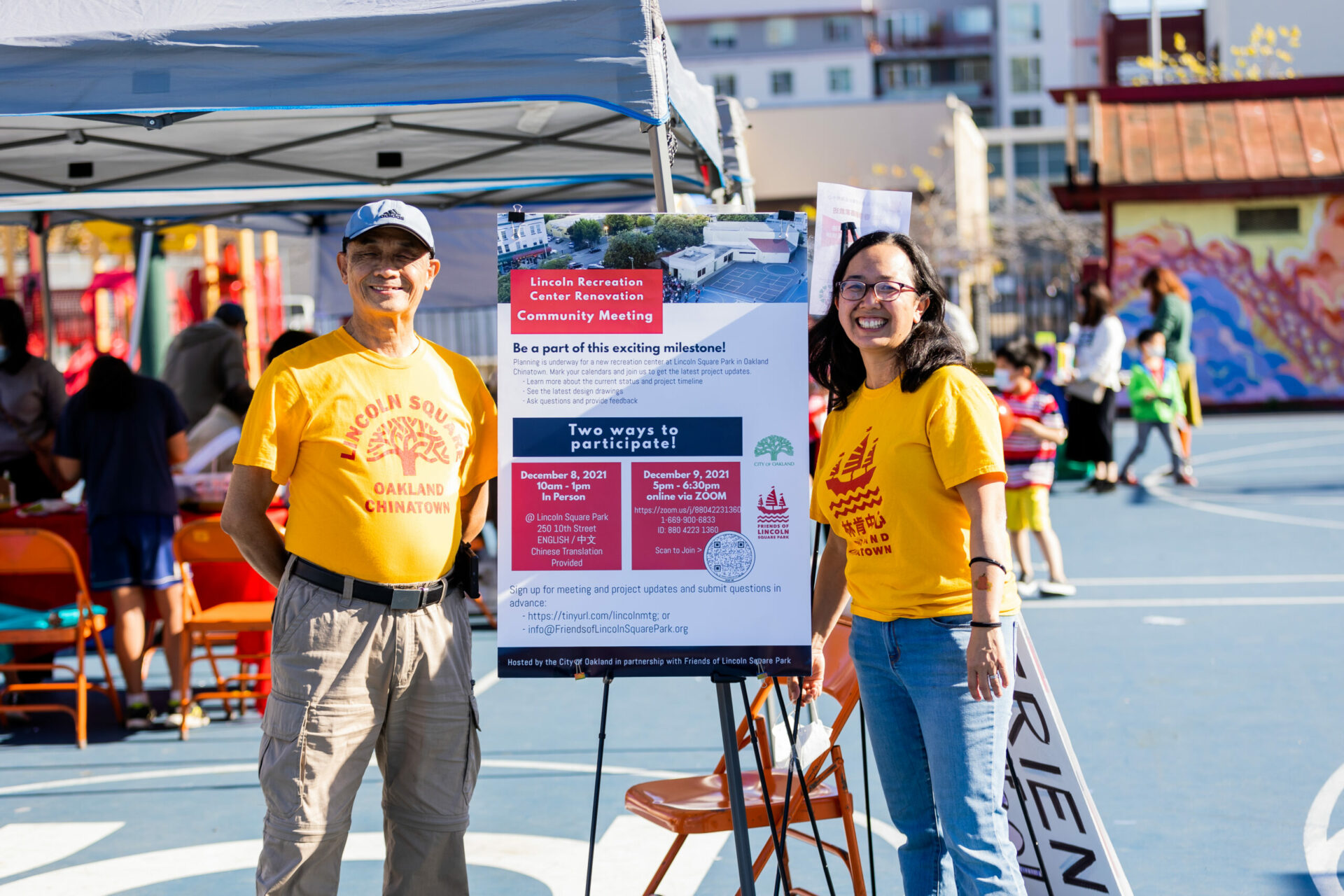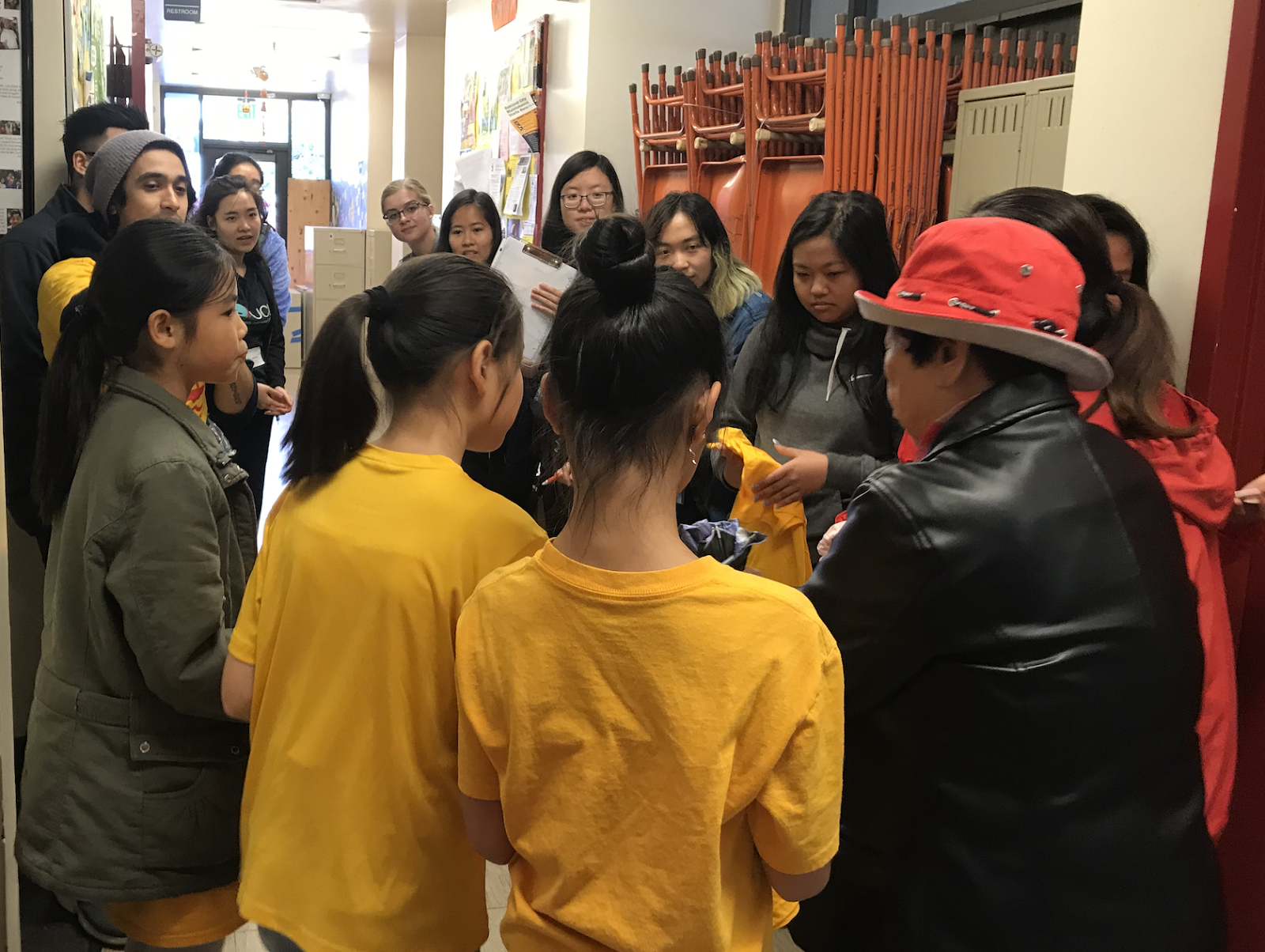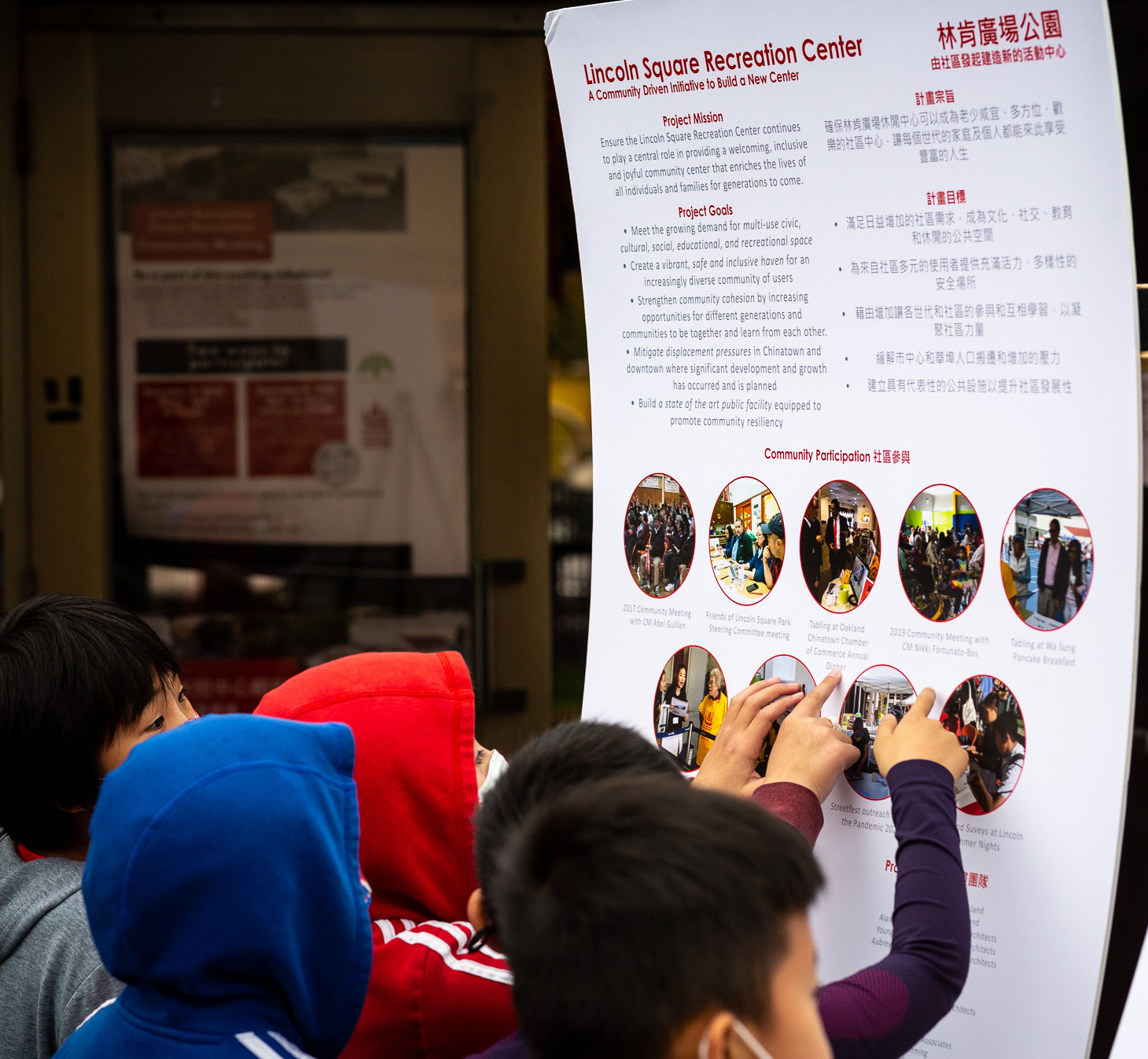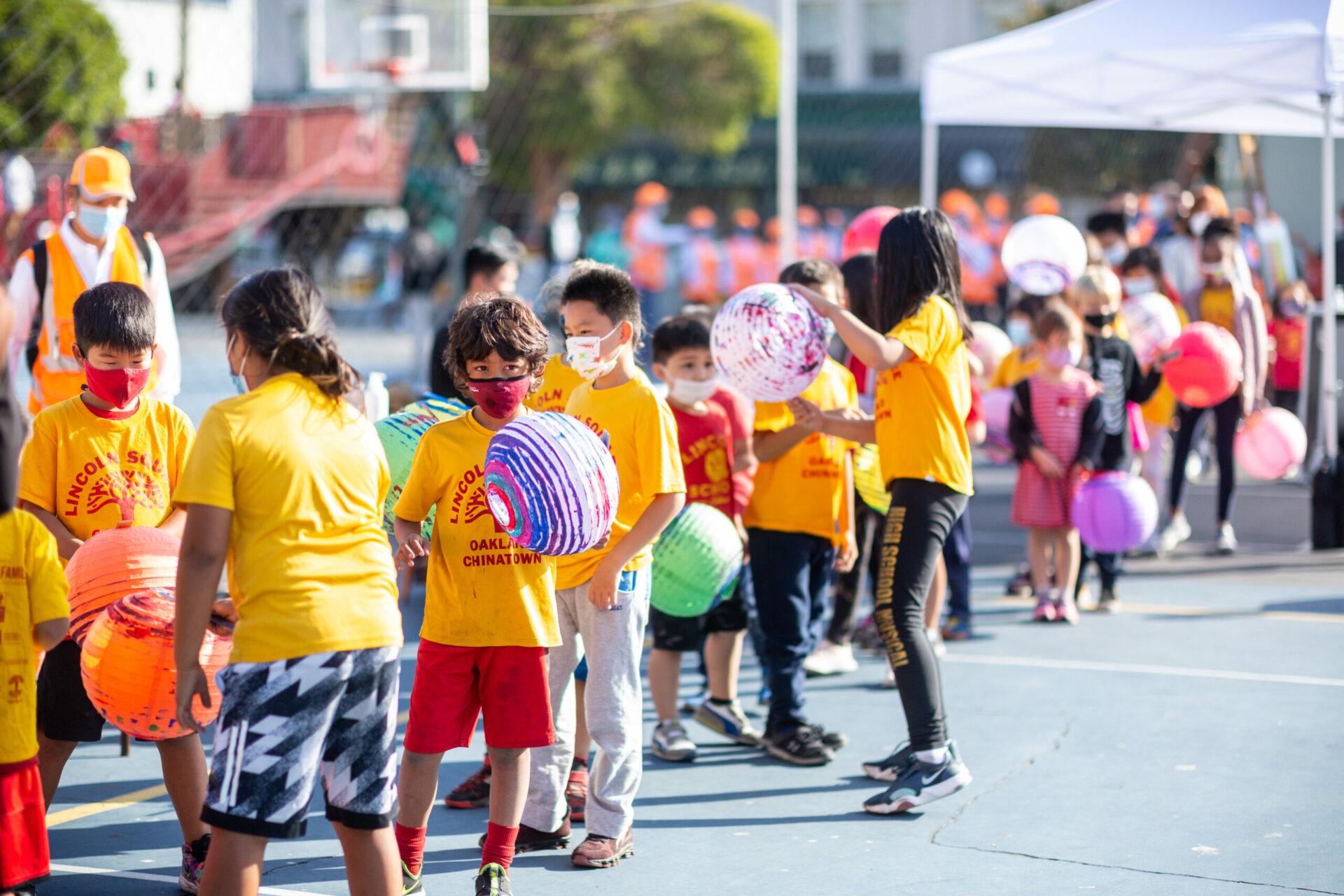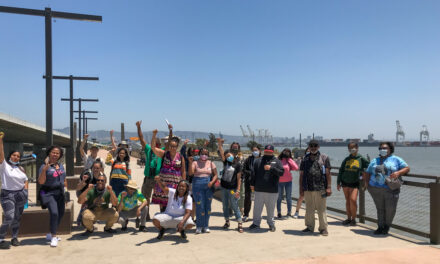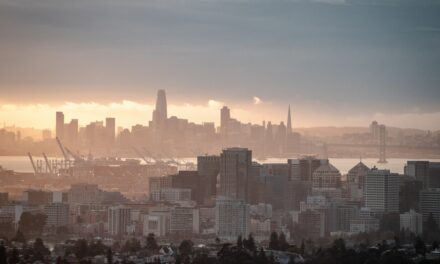Oakland Tailors Resilience Hubs to Neighborhood Needs
“As much as governments tend to be siloed into housing or transportation or land use, communities never are…you can’t plan for a single purpose and expect that’s the only reason people will come to the facilities and use them.”
Faced with a health crisis, most people will go somewhere familiar for help, a place they feel welcome. As the central valve in the heart of Oakland Chinatown, Lincoln Recreation Center and Park is that crucial home base where locals can get their needs met on any given day of the year and during emergencies.
“[The Center’s] a safe haven that is playful and joyful and where memories are made for the community,” says Tiffany Eng, co-founder of Friends of Lincoln Square Park, a volunteer organization dedicated to renovating the aging recreation center.
Recently, with new health crises related to extreme heat, wildfire smoke, power outages, and pandemic stresses, local activists and officials are thinking about the center as a place to comprehensively prepare the most vulnerable communities (including youth, seniors, limited English speaking immigrants, and low-income residents), for the worst impacts of climate change.
Eng affirms that this is simply a natural extension of the Center’s historic role in the community: “We need a resiliency place. That might be a new name or new terminology but in some ways [the Center] has already been functioning that way. Being able to bolster it with climate resiliency via cleaner air or solar panels or even shade will help strengthen what we have going on.”
A longtime community organizer, Eng comes from an extensive line of family members who have lived in and around Oakland. When she and other locals think of Lincoln Square Park, the annual Wa Sung Easter pancake breakfast and Lincoln Summer Nights come to mind. When they think of the center, they think of town hall meetings, tai chi, basketball, and after school programming. It’s where kids play, while parents go shopping for groceries, recently arrived immigrants go to access resources, and seniors stay connected. In recent years, it’s also been a place where they could access PPE and gather during periods of anti-Asian violence. Indeed, the old rec center building that is so many things to so many people is now struggling to keep up.
In response, both community groups and the City of Oakland have been working to lay the groundwork to renovate this essential rec center. But first they need to understand what local residents need and want in a “resilience hub.”
Louis Sun and Tiffany Eng at Oakland Chinatown Community Resources Fair. Photo: Reya Photography, Courtesy Friends of Lincoln Square Park
The Asian Pacific Environmental Network (APEN), which works with immigrant and refugee communities to advance environmental justice, has helped Chinatown residents and businesses envision what a holistic Lincoln Recreation Center resilience hub could look like.
“We’re thinking about safety, belonging, and community as essential parts of climate resilience,” says Shina Robinson, Policy Coordinator at APEN.
When APEN first got involved, they had already been collaborating on programming at the Center for years. In 2021, APEN brought in the Center and the City of Oakland’s Public Works Department to participate in an educational workshop series, convened by NorCal Resilience Network, that spanned a variety of resilience topics. Through Chinese language surveys, APEN also identified priority resilience hub elements their members wanted: the ability to charge devices to maintain communication with families, to refrigerate medicines and foods, and to have access to clean air. This education and engagement helped set the stage for local residents to shape the vision of a redeveloped center.
To fully tear down the Lincoln Recreation Center building, triple its current size, and upgrade the surrounding park, Oakland will need to raise roughly $32 million. So far, community groups have tapped a patchwork of sources, securing $8.5 million from a state parks grant, $4 million from Oakland’s city budget, and an additional pending $2 million in federal funding.
Fortunately, the resilience hub concept is gaining steam: the state allocated $110 million for this year toward a brand new Strategic Growth Council resilience center grant program. If the City of Oakland, in collaboration with community groups, can successfully raise the rest, the Lincoln Recreation Center resilience hub could be a model for the City, the state of California, and beyond.
A city the size of Oakland needs more than one hub, however. Indeed, Oakland aims to complete three resilience hubs by 2030, as outlined in its Equitable Climate Action Plan. On the ground, however, the city is already on track to develop an ecosystem of ten to twenty resilience hubs in that timeframe, with six currently undergoing active planning. These sites include two libraries and the Rainbow Recreation Center in East Oakland, First Baptist Church in Uptown, a cluster of buildings in West Oakland, and the Lincoln center.
The City of Oakland is applying takeaways from other existing climate resilience measures to their resilience hub approach. “As much as governments tend to be siloed into housing or transportation or land use, communities never are,” says Daniel Hamilton, Oakland’s Sustainability Program Manager. “One thing we’ve learned from the cooling and respite centers is that you can’t plan for a single purpose and expect that’s the only reason people will come to the facilities and use them.”
Oakland is prioritizing placing hubs in low income and disadvantaged communities, ensuring accessibility, and tailoring each hub’s unique design to local needs. “The definition of a particular resilience hub is based on an equitable engagement process with the community we want to serve,” says Hamilton.” [If we can] get out of our siloed thinking and also do better outreach, those two things combined will lead to much better outcomes.”
APEN’s Robinson adds “these are the investments in community solutions that folks have been waiting for and been blocked from for a long time. Our climate risks and threats are growing. Resilience hubs are an opportunity not just to help communities catch up but to actually help them get into a better place to thrive through [our] changing landscape.”
Photo: Jonathan Fong, Courtesy Friends of Lincoln Square Park.






